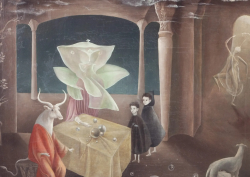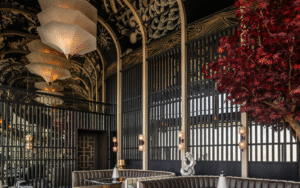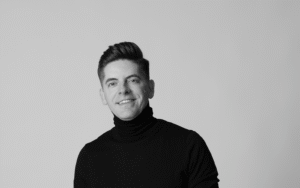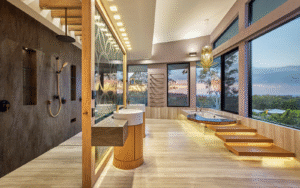To mark this years International Women’s Day, we’re looking beyond the straps and hashtags and, instead, identifying women in the design realm who have embraced technology and innovation both past and present while challenging established design norms and shifting boundaries – our future is truly #DigitALL…

This year, International Women’s Day is celebrating under the banner DigitALL: Innovation and technology for gender equality. From the earliest days of computing to today’s platforms of virtual reality and artificial intelligence, women have made untold contributions to the digital world in which we increasingly live in. Women have also had and continue to make a huge impact in the design world. Running with these two threads we are shining a light on a few of the designers who have embraced both design and technology to elevate their craft.
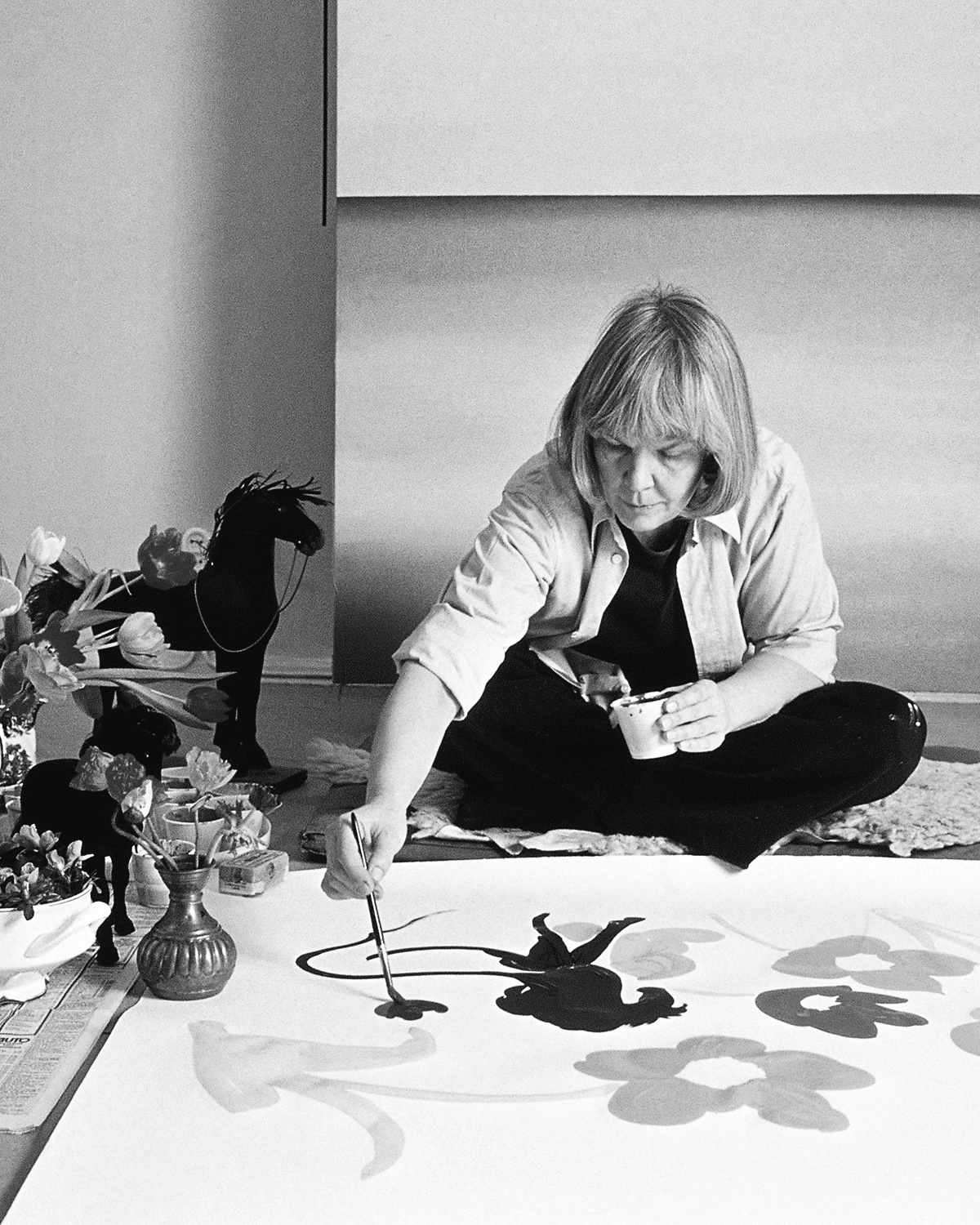
Image credit: Marimekko
Who in the design world doesn’t recognise the iconic Marimekko poppy design? An image that has in many ways come to represent all that is Marimekko, was created in 1964 by Finnish designer Maija Isola. Despite the company policy, as set by Marimekko’s founder, to use ‘anything but flowers’ , by having the creative confidence to challenge those boundaries Isola more or less single-handedly gave the brand the colourful aesthetic it is still known for today. We have chosen to highlight some of the women whose design work, in some shape or form, embraces change. And like Isola, they have not always followed the rules.
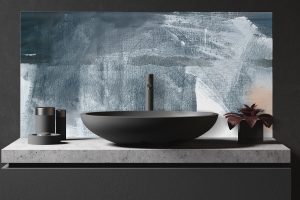
Image credit: Red Dog Glass Design
Fast forward from 1964 to 2023 and the design industry remains a platform where women innovate and harness technology to create something different. The work of artist Sally Coulden of Red Dog Glass Design combines contemporary art with exciting materials and technology. Her impactful abstract paintings reflect wild British spaces which the team at Red Dog Glass Design carefully translate the original paintings into works of digital art, deconstructing and recreating each piece into a range of bespoke sizes. The artwork is then expertly applied to high-quality glass panels that are durable, practical and of course beautiful.
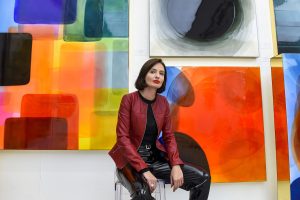
Image credit: Nat Bowen
Also stepping outside the boundaries of traditional surfaces, abstract artist Nat Bowen brings colour to the table in her vibrant multi-layered resin works. Bowen bases her art on the concept of chromology, the psychology behind colour. She relates this, in turn, to her practice of wellbeing, meditation and mental health using the creation of her artwork as a way to manage these areas of life. Despite using a medium that in many ways embraces technology she uses the process to detach from technology and defer everyday distractions whilst she paints. From high-speed collaborations with Maclaren to more meditative installations, Bowen’s work exemplifies the use of technology for good – embracing techniques and mediums that are forward-facing, while focussing on the inner-wellbeing of both artist and viewer.

Image credit: Northern Lights
Combining the creativity of her designs with the requisite practical application of technology, Donna Gridley, Head of Creative at British luxury lighting manufacturer Northern Lights, works closely with the in-house design team to translate her sketches and concepts into 3D models. Using the teams’ Solidworks expertise, this modelling allows her to make finer tweaks and adjustments by viewing the design from all angles, ensuring it has been carefully considered and reflects the design brief perfectly.
“I am by nature creative with a passion for art, texture and sculpture, and my sketchbooks are never far away,” Gridley told Hotel Designs. “However, it’s been important for me to also work with the technology available to refine and maximise my creative output. Whether that’s understanding new technical applications and machinery in manufacturing, to working with the software used by our design team to translate and refine my designs.”

Image credit: Topophyla
Stepping into the great outdoors, as Co-Founder of landscape design firm Topophyla, Nahal Sohbati, has introduced advanced technology into the landscape design process with drone-aided design. While nature may be the central pillar to everything it does, Topophyla use drones and the surrounding technology to construct the trademark poetically designed landscapes. “Drones are an integral part of our process,” explained Sohbati. “We use the data they collect from the beginning of our projects, with site analysis, to the end, with post-occupancy studies.” With a strong focus on connecting communities to their environment Sohbati’s designs are a clear illustration of how we can harness technology to re-connect with nature.
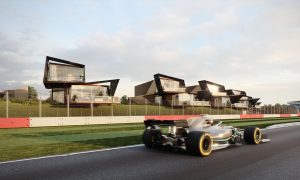
Image credit: Twelve Architects
Moving into the realm of the built environment, architect Lorraine Stoutt Griffith has been one of the driving forces behind the Escapade Silverstone project, a space that seamlessly merges hospitality and motorsport in an original way, while also challenging conventional approaches to designing hospitality properties. In a previous interview with Hotel Designs’ Stoutt Griffith unravelled the challenges that she and her team at Twelve Architects faced and then confronted with innovative solutions to push boundaries in the luxury wellness arena of hotel design and hospitality. The end result is an interesting juxtaposition of a design that embodies the speed and technology of its location, while at the same time provides a connection with the natural landscape that frames it.
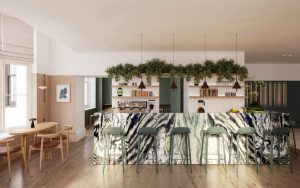
Image credit: Inhabit Hotels
Slowing the pace down and taking time for a little introspection, a strong belief that businesses can positively shape communities and the world, Co-Founder of Inhabit Hotels, Nadira Lalji, has put wellness at the heart of the brand, injecting it into every level, from the checking-in process to the design and sense of community. “Every aspect of our hotel is aligned with what being well means to us,” explained Lalji. “We think of wellness as more than a physical state, but a way of being. Our brand pillars, which stand for social connectedness, intellectual expansion and environmental responsibility, reinforce this belief”. Seeing Inhabit Hotels as more than a place to stay but as a force for good is essentially what Lalji and the brand has brought to the hospitality table. Everything is mindfully considered and curated with a genuine commitment to environmental initiatives and meaningful community partnerships. This ethos is not simply about providing guests with a recycled water bottle and the odd yoga lesson, it has been carefully thought through and penetrates every touchpoint, from materials used through to service, F&B offerings to its business model and broader interaction with the local community.

Image credit: Roar
And finally, no conversation on women embracing technology and change in design can be had in 2023 without casting our eyes onto the horizon of the metaverse. And with that being said, Pallavi Dean is among a handful of designers who are championing both technology and the metaverse with personal positivity that is making the virtual world a whole lot more relatable. As Founder and Creative Director of Dubai-based interior design studio Roar, Dean has always been clear that she believes design should be experiential, people centric and possibly just a little disruptive. With this mindset, she has become a champion of all things metaverse and in the process has demystified a lot of the hype around a concept that is so often dismissed. “The metaverse is clearly a lasting commercial phenomenon, not a passing fad, so we want – and need – to be there,” states Dean, believing that the growth of virtual architecture is likely to shape the future of physical buildings and public spaces. Essentially what the designer is doing by voicing her research and understanding of the metaverse is challenging preconceptions and putting alternatives forward that are being offered to us by technology on the table in a far more personable package. It is a progressive approach to design and hospitality that is both refreshing and challenging.
Main image credit: Hotel Designs





